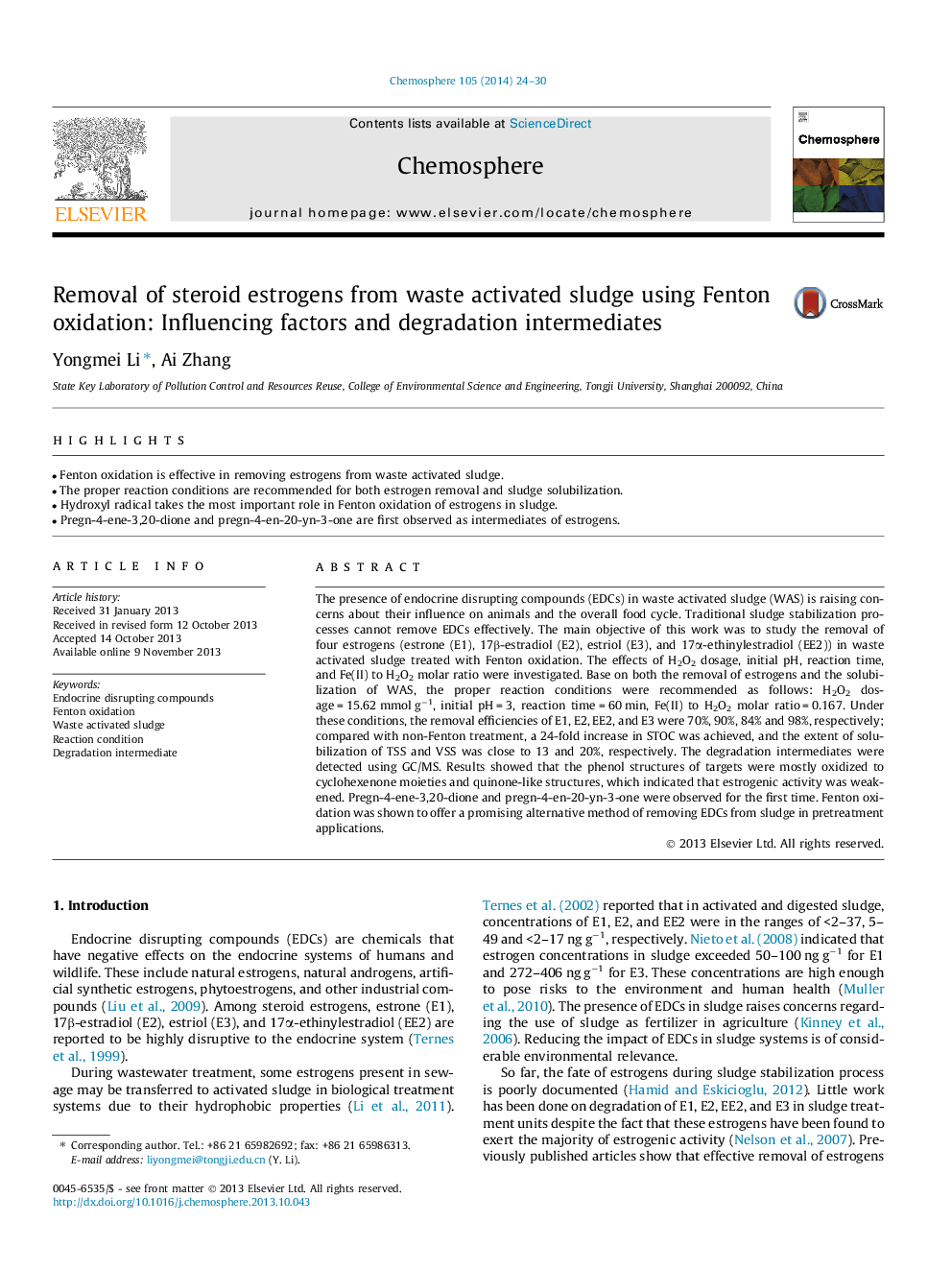| کد مقاله | کد نشریه | سال انتشار | مقاله انگلیسی | نسخه تمام متن |
|---|---|---|---|---|
| 4408875 | 1618866 | 2014 | 7 صفحه PDF | دانلود رایگان |
• Fenton oxidation is effective in removing estrogens from waste activated sludge.
• The proper reaction conditions are recommended for both estrogen removal and sludge solubilization.
• Hydroxyl radical takes the most important role in Fenton oxidation of estrogens in sludge.
• Pregn-4-ene-3,20-dione and pregn-4-en-20-yn-3-one are first observed as intermediates of estrogens.
The presence of endocrine disrupting compounds (EDCs) in waste activated sludge (WAS) is raising concerns about their influence on animals and the overall food cycle. Traditional sludge stabilization processes cannot remove EDCs effectively. The main objective of this work was to study the removal of four estrogens (estrone (E1), 17β-estradiol (E2), estriol (E3), and 17α-ethinylestradiol (EE2)) in waste activated sludge treated with Fenton oxidation. The effects of H2O2 dosage, initial pH, reaction time, and Fe(II) to H2O2 molar ratio were investigated. Base on both the removal of estrogens and the solubilization of WAS, the proper reaction conditions were recommended as follows: H2O2 dosage = 15.62 mmol g−1, initial pH = 3, reaction time = 60 min, Fe(II) to H2O2 molar ratio = 0.167. Under these conditions, the removal efficiencies of E1, E2, EE2, and E3 were 70%, 90%, 84% and 98%, respectively; compared with non-Fenton treatment, a 24-fold increase in STOC was achieved, and the extent of solubilization of TSS and VSS was close to 13 and 20%, respectively. The degradation intermediates were detected using GC/MS. Results showed that the phenol structures of targets were mostly oxidized to cyclohexenone moieties and quinone-like structures, which indicated that estrogenic activity was weakened. Pregn-4-ene-3,20-dione and pregn-4-en-20-yn-3-one were observed for the first time. Fenton oxidation was shown to offer a promising alternative method of removing EDCs from sludge in pretreatment applications.
Journal: Chemosphere - Volume 105, June 2014, Pages 24–30
